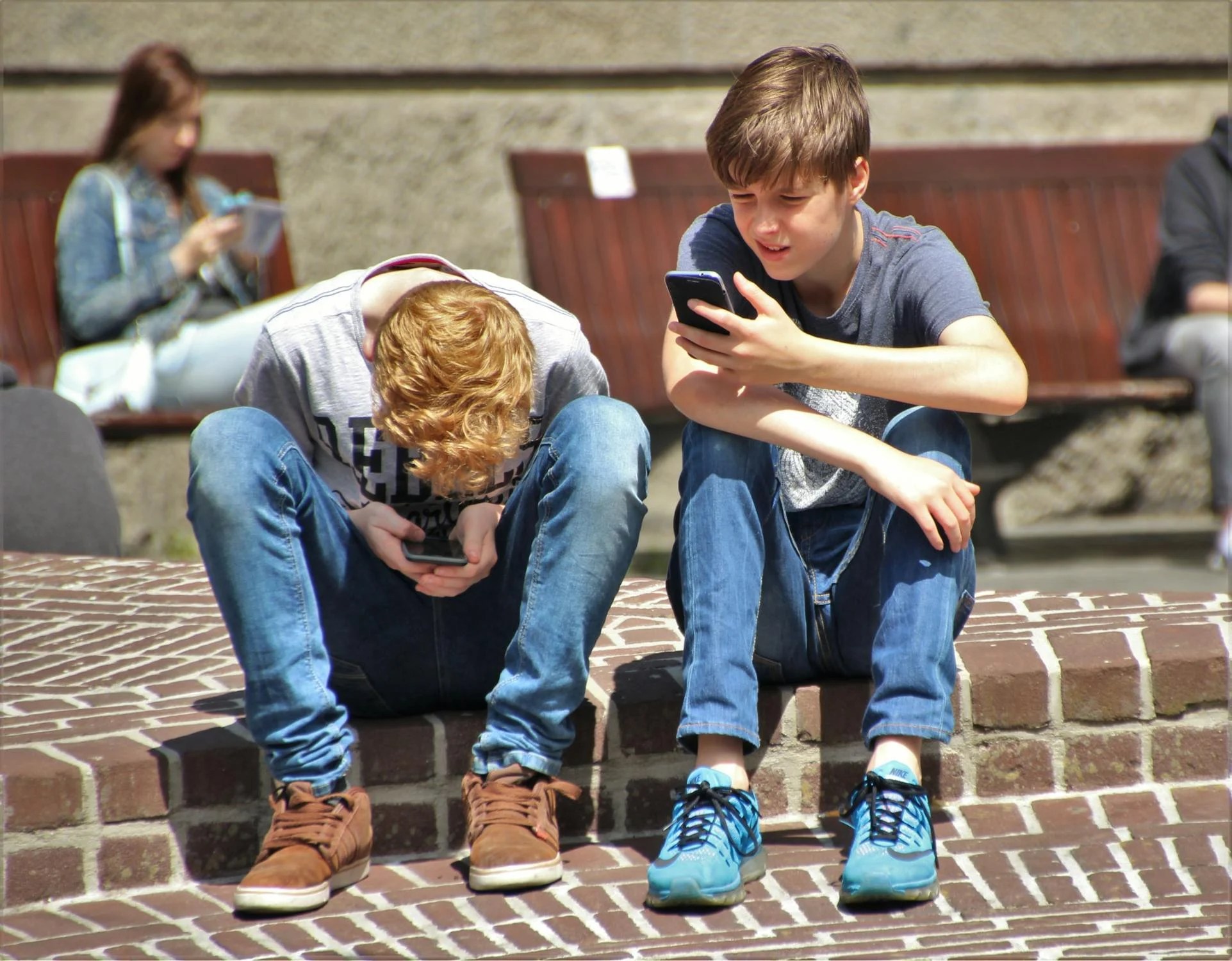For Teens, Phones Aren’t the Problem
They’re the Solution to a Life Otherwise Out of Their Hands

As the director of the Santa Barbara Free School, where students co-create the program, I see every day what happens when you give teens trust, respect, and agency.
School districts like L.A. Unified have banned student cell phone use throughout the school day, largely assuming that phones are the cause of student disengagement and poor mental health. Flip that assumption on its head and look at this from our students’ perspective. For teens, phones aren’t the problem — they’re the solution.
Our students are solving for a series of problems beyond their control, with the best tools they’ve got. Phones are the most powerful antidote available to the real problems: boredom, isolation, depression, and a lack of meaningful work in their lives. Why? Students have 40-plus-hour-a-week factory jobs! School for most teenagers is a stressful full-time job, divorced from any real purpose. Stuffed into ever more crowded classrooms, pushed to perform for grades and standardized tests, forced to sit through classes for fear of punishment, teens distract and disengage at every possible opportunity. Who can blame them? They’re coping with an unfair reality with the best tools available.
To see it firsthand, I signed up to substitute teach a few classes in a local high school. What I saw there drove home for me the gravity of the situation faced by teachers and administrators.
During an hour with students in a required art class, it was mayhem. Students refused to leave their phones in the “hotel,” played mobile games, scrolled TikTok. A few were hunched over, absorbed in Netflix. Granted, substitute teachers are the least respected and most abused educators at school. I know I gave subs some hell in my time. Is that because, as so many adults believe, teenagers are a lawless and disrespectful bunch of would-be criminals in need of firm discipline?
Absolutely not. As the co-director of the Santa Barbara Free School, where students co-create the program, I see every day what happens when you give teens trust, respect, and agency (spoiler: they step into that responsibility with pride and purpose). Those high schoolers treated that art class with disrespect because they were disrespected first.
We hear from our colleagues in conventional schools, from parents, and from our students themselves that we’re at a crisis point. Teen mental health is at an historic low. The surgeon general is calling for warning labels on social media. Parents are increasingly restricting teen’s freedoms “IRL” (in real life) while granting access to the wide-open internet — a Wild West of extreme discourse and disturbing content, not to mention an endless barrage of advertisements preying on our insecurities.
The evidence is overwhelming. Students receive an average of 200 notifications a day. Recent studies have shown the detrimental effects of screen time and social media on teen’s feelings of self worth, on their sleep, on their grades, on internalized problems like anxiety, social anxiety, and depression, and most worryingly on body image, eating disorders, and suicidal behavior among teen girls. Something has to change.
But for teens, phones are solutions to these problems! While acknowledging that “social media does make them feel worse about their body and interferes with sleep, time with family and school work,” participants of a study by the Boston Children’s Hospital Digital Wellness Lab reported seeing “their media use as mainly having a positive impact on their well being”!
How can this be? Without healthier coping mechanisms, the underlying issues — oppressive schooling, restrictive parenting, lack of agency — feel insurmountable. Though we can see phone use as maladaptive behavior, it’s clear we have to focus not only on the symptoms but on these underlying causes.
Co-created classroom experiences change the nature of the problems students are solving for. By giving students a say in what, when, how, and most importantly in why they learn, they ground their everyday experience in work that is personally meaningful and societally transformational. By treating students as collaborators and co-creators, educators can build self-confidence and agency in a world that seeks to restrict it.
Empowering students typically means letting them set school rules and expectations. But that’s not always enough. Even at the Free School, student input ends with matters of health and safety. Last year we couldn’t find consensus on how to approach the issue of phones disrupting our culture, so this year we’re acting for the health of our community by restricting phones in school.
We looked to Jonathan Haidt’s excellent, “The Anxious Generation” for perspective, and urge you to check out the research on his site. He advocates “four norms” that address both symptoms and causes: No smartphones before high school, no social media before 16, phone-free schools, and more independence, free play, and responsibility in the real world. We couldn’t agree more.
As educators, administrators, and school boards grapple with the phone problem, we encourage taking the discussion to a higher level — addressing the dilemmas at the heart of the teenage experience. We find real necessity in the trend toward banning phones in schools. But blaming teens and phones misses the mark, even if phone use is a symptom of several entrenched problems in education.
In a lot of ways, the students just need something better to do with their time.
Jesse Resnick is co-director of the Santa Barbara Free School, an independent day program for middle and high school students in downtown Santa Barbara. S.B. Free empowers teens to take ownership of their education with co-created classes, community partnerships and experiential learning.
